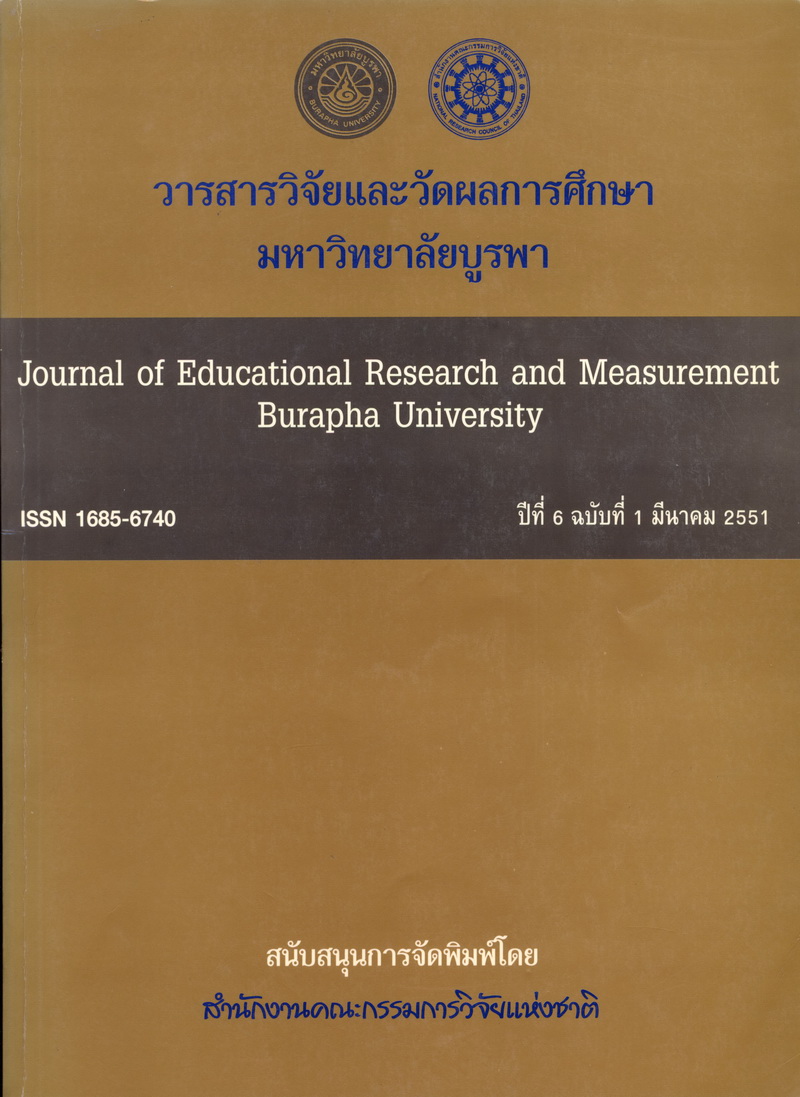Gender Differences in Practical Intelligence Among Lower and Upper Secondary School Students
Main Article Content
Abstract
The objectives of this research were to undertake a second-order confirmatory factor analysis of the Practical Intelligence self-evaluation questionnaire, and to analyze the variance of five skills of Practical Intelligence by the gender of lower and upper secondary school students, using multivariate analysis of variance methods. The samples consisted of 1,200 lower and upper secondary school students in Bangkok Educational Service Area Office, academic year 2007. The independent variables were gender and school level; dependent variables were five skills of Practical Intelligence: household skills, use of technical equipment and repair skills, active recreation or sports skills, hobbies or artistic skills, and communication skills. LISREL was used to analyze the second - order confirmatory factor analysis.
The Two-way, gender by level, multivariate analysis of variance was completed with SPSS. The results were as follows: The Practical Intelligence of secondary school students included the five skills mentioned. All observed variables, and five factors of the questionnaire, were found to be significant at the .05 level, with the chi-square goodness of fit test at 1123.30, p = .97,df = 1213, GFI = 1.00, AGFI = 0.99, and CFI = 1.00.
In regard to the multivariate analysis of variance, gender differences were uncovered at lower and upper secondary levels, with statistical significance in terms of use of technical equipment and repair skills at the .05 level. Boys at the upper secondary level had the highest outcome on use of technical equipment and repair skills. Boys at lower
secondary were rated second highest; upper secondary girls were third; lower secondary girls were lowest. No gender or level differences were found regarding household skills, active recreation or sports skills, hobbies or artistic skills, and communication skills.

